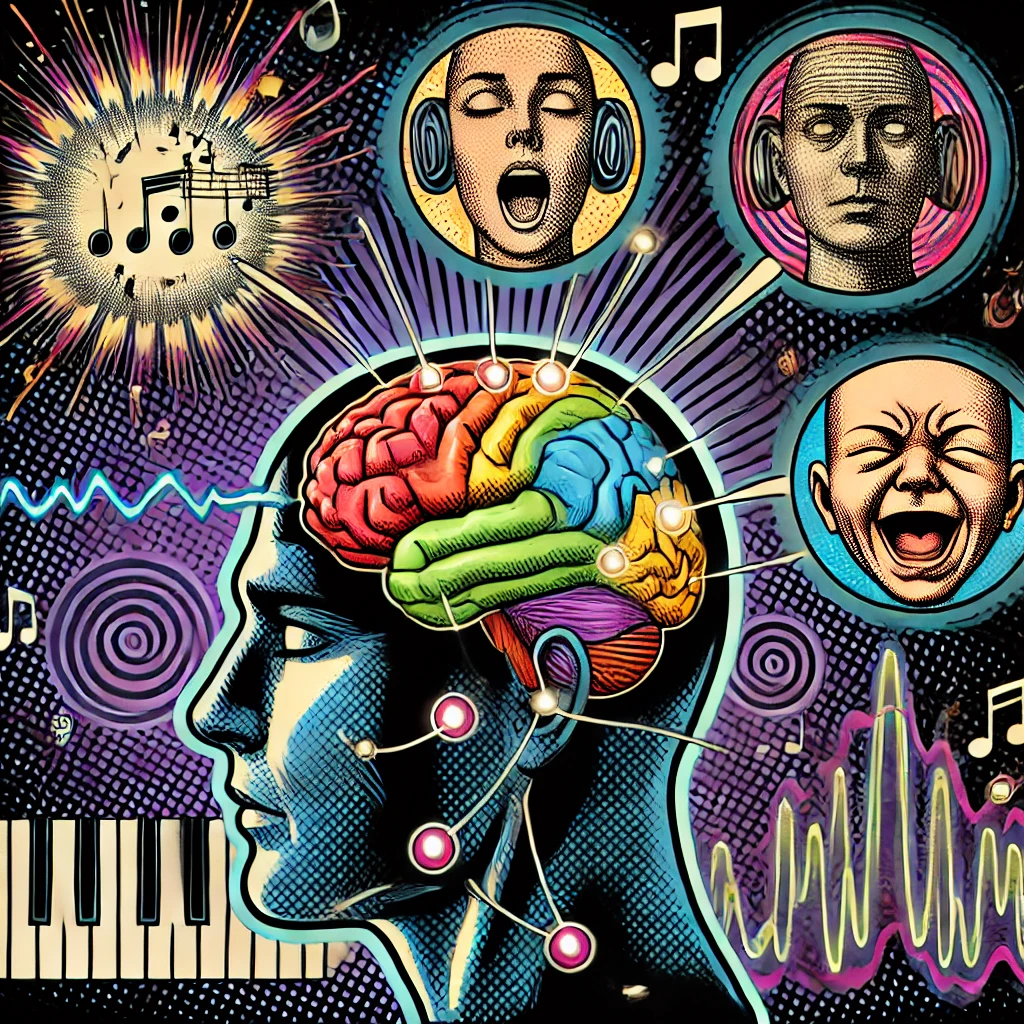Fear across the senses Brain responses to music vocalizations and facial expressions
Abstract
“…subject-specific amygdala responses to fearful music and vocalizations were correlated, consistent with the proposal that the brain circuitry involved in the processing of musical emotions might be shared with the one that have evolved for vocalizations. Overall, our results show that processing of fear expressed through music, engages some of the same brain areas known to be crucial for detecting and evaluating threat-related information.”
Content
Intrinsic emotional expressions such as those communicated by faces and vocalizations have been shown to engage specific brain regions, such as the amygdala. Although music constitutes another powerful means to express emotions, the neural substrates involved in its processing remain poorly understood. In particular, it is unknown whether brain regions typically associated with processing ‘biologically relevant’ emotional expressions are also recruited by emotional music. To address this question, we conducted an event-related functional magnetic resonance imaging study in 47 healthy volunteers in which we directly compared responses to basic emotions (fear, sadness and happiness, as well as neutral) expressed through faces, non-linguistic vocalizations and short novel musical excerpts. Our results confirmed the importance of fear in emotional communication, as revealed by significant blood oxygen level-dependent signal increased in a cluster within the posterior amygdala and anterior hippocampus, as well as in the posterior insula across all three domains. Moreover, subject-specific amygdala responses to fearful music and vocalizations were correlated, consistent with the proposal that the brain circuitry involved in the processing of musical emotions might be shared with the one that have evolved for vocalizations.
Overall, our results show that processing of fear expressed through music, engages some of the same brain areas known to be crucial for detecting and evaluating threat-related information.
http://scan.oxfordjournals.org/content/early/2014/06/17/scan.nsu067.abstract
Studying brain responses to music, vocalizations, and facial expressions involves examining how different regions of the brain are activated when individuals perceive and process auditory and visual stimuli related to music, speech, and emotional expressions. Here’s an overview of how such research might be conducted:
1. Neuroimaging Studies: Researchers use neuroimaging techniques such as functional magnetic resonance imaging (fMRI), electroencephalography (EEG), and magnetoencephalography (MEG) to measure brain activity in response to music, vocalizations, and facial expressions. These techniques allow researchers to identify brain regions that are activated during auditory and visual processing tasks.
2. Auditory Processing: When individuals listen to music or vocalizations, auditory areas of the brain, such as the auditory cortex, temporal lobes, and superior temporal gyrus, are activated. Different aspects of auditory stimuli, such as pitch, rhythm, and timbre, are processed in specialized regions of the auditory cortex.
3. Emotional Processing: Emotional responses to music, vocalizations, and facial expressions involve the activation of limbic system structures such as the amygdala and hippocampus. These regions play a key role in processing and regulating emotions, including fear, pleasure, and social bonding. Studies have shown that music and vocalizations can elicit strong emotional responses and activate brain regions associated with reward processing and emotional arousal.
4. Cross-Modal Processing: Research has also examined how the brain integrates information from different sensory modalities, such as auditory and visual stimuli. For example, studies have investigated how the brain processes facial expressions of emotion in conjunction with emotional vocalizations or musical cues. Cross-modal integration is thought to occur in multisensory brain regions such as the superior temporal sulcus and prefrontal cortex.
5. Cognitive Processing: In addition to emotional responses, brain responses to music and vocalizations involve cognitive processes such as attention, memory, and language comprehension. For example, when individuals listen to speech or vocalizations, regions involved in language processing, such as Broca’s area and Wernicke’s area, are activated. Similarly, when individuals listen to music, regions involved in auditory working memory and attentional control may be engaged.
6. Individual Differences: Research on brain responses to music, vocalizations, and facial expressions also considers individual differences in musical training, cultural background, and personality traits. For example, musicians may show enhanced activation in auditory and motor regions of the brain compared to non-musicians, while cultural factors may influence preferences for different types of music and emotional expressions.
Overall, studying brain responses to music, vocalizations, and facial expressions provides valuable insights into the neural mechanisms underlying auditory and visual perception, emotional processing, and social cognition. This research has implications for understanding the role of music and communication in human behavior, as well as for developing interventions for clinical populations with auditory or social-emotional disorders.
